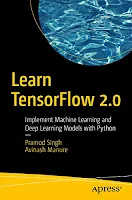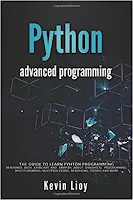Pro Python 2nd Edition by J. Burton Browning and Marty Alchin
 J. Burton Browning, Marty Alchin ... 384 pages - Publisher: Apress; 2nd edition (December, 2014) ... Language: English - ISBN-10: 1484203356 - ISBN-13: 978-1484203354.
J. Burton Browning, Marty Alchin ... 384 pages - Publisher: Apress; 2nd edition (December, 2014) ... Language: English - ISBN-10: 1484203356 - ISBN-13: 978-1484203354.You’ve learned the basics of Python, but how do you take your skills to the next stage? Even if you know enough to be productive, there are a number of features that can take you to the next level in Python. Pro Python, Second Edition explores concepts and features normally left to experimentation, allowing you to be even more productive and creative. In addition to pure code concerns, Pro Python develops your programming techniques and approaches, which will help make you a better Python programmer. This book will improve not only your code but also your understanding and interaction with the many established Python communities. This book takes your Python knowledge and coding skills to the next level. It shows you how to write clean, innovative code that will be respected by your peers. With this book, make your code do more with introspection and meta-programming. And learn and later use the nuts and bolts of an application, tier-by-tier as a complex case study along the way.
What you’ll learn: Write strong Python code that will be respected in the Python community + Understand the reasons behind big design decisions in Python + Write programs that can reconfigure themselves in Python + Disguise your code as different types of objects in Python + Inspect just about any object in Python + Prepare your code for international audiences + Ensure code quality with rigorous testing. Who this book is for: This book is for intermediate to advanced Python programmers who are looking to understand how and why Python works the way it does and how they can take their code to the next level.
















